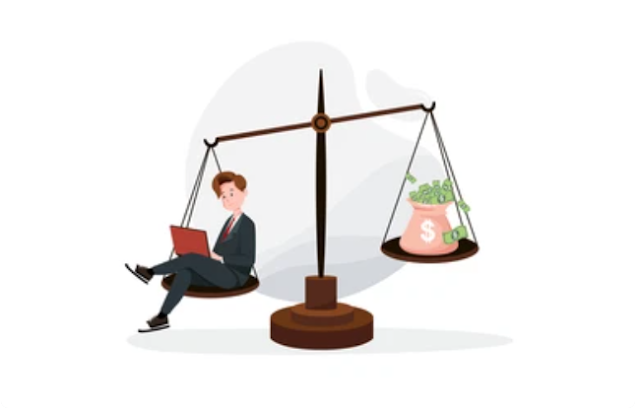Understanding and Managing Debt: Tips for Debt Reduction
Debt can be a
useful financial tool when used responsibly, but excessive debt can quickly
become overwhelming and detrimental to your financial well-being. Understanding
and managing debt is essential for achieving financial freedom and reducing
financial stress. In this comprehensive guide, we will explore various
strategies and tips for effective debt reduction.
1. Types of Debt
Good Debt
vs. Bad Debt
Understanding
the difference between good debt and bad debt is crucial. Good debt, such as a
mortgage or student loans, may have low-interest rates and can lead to
long-term financial benefits. On the other hand, bad debt, such as credit card
debt or payday loans, usually comes with high-interest rates and should be
avoided or paid off quickly.
2. Assessing Your Debt
Compile a
List of Debts
Make a
comprehensive list of all your debts, including credit cards, personal loans,
student loans, auto loans, and any other outstanding balances. Note the
interest rates, minimum payments, and outstanding balances for each debt.
Calculate
Your Debt-to-Income Ratio
Your
debt-to-income ratio is an important financial metric that measures your
monthly debt obligations in relation to your income. To calculate it, divide
your total monthly debt payments by your gross monthly income. A high
debt-to-income ratio may indicate that you are carrying too much debt relative
to your income.
3. Creating a Debt Repayment Plan
Snowball Method
The snowball
method involves paying off the smallest debt first while making minimum
payments on other debts. Once the smallest debt is paid off, roll the payment
amount into the next smallest debt, creating a snowball effect. This approach
provides a sense of accomplishment and motivation as debts are eliminated one
by one.
Avalanche
Method
The
avalanche method prioritizes paying off debts with the highest interest rates
first. By focusing on high-interest debts, you can save money on interest payments
over time and pay off your debts more efficiently.
Debt
Consolidation
Debt
consolidation involves combining multiple debts into a single loan with a lower
interest rate. This can simplify your debt repayment and potentially reduce
your monthly payments. However, it's essential to carefully evaluate the terms
and fees associated with the consolidation loan.
4. Budgeting for Debt Repayment
Cut
Unnecessary Expenses
Review your
budget and identify areas where you can cut back on spending. Redirect the
money saved from cutting unnecessary expenses towards debt repayment. Consider
reducing dining out, entertainment, and impulse purchases to free up more funds
for debt reduction.
Increase
Your Income
Supplement
your current income by exploring side hustles, freelancing opportunities, or
part-time work. The additional income can accelerate your debt repayment and
help you become debt-free faster.
5. Negotiating with Creditors
Contact
Your Creditors
If you're
struggling to meet your debt obligations, don't hesitate to contact your
creditors. Explain your financial situation honestly and ask if they can offer
any temporary relief, such as a lower interest rate, reduced payments, or a
payment plan.
Consider
Debt Settlement
Debt
settlement involves negotiating with creditors to pay a lump sum that is less
than the total amount owed. This option is usually pursued when you are facing
significant financial hardship and cannot repay the full debt. However, debt
settlement can have a negative impact on your credit score, so weigh the pros
and cons carefully.
6. Building an Emergency Fund
Create a
Safety Net
Having an
emergency fund is essential to avoid falling back into debt during unexpected
financial challenges. Aim to save 3 to 6 months' worth of living expenses in
your emergency fund. This fund will provide a financial cushion to cover
unexpected expenses, such as medical emergencies or car repairs.
7. Avoiding New Debt
Be
Mindful of Credit Card Usage
Credit cards
can be convenient but can also lead to overspending and accumulating
high-interest debt. Use credit cards responsibly and avoid carrying balances
that you cannot pay off in full each month.
Live
Within Your Means
Resist the
temptation to live beyond your means. Prioritize needs over wants and avoid
taking on new debt for non-essential purchases. Living within your means is a
fundamental principle of sound financial management.
8. Seeking Professional Help
Credit Counseling
If managing
your debt becomes overwhelming, consider seeking assistance from a nonprofit
credit counseling agency. Credit counselors can review your financial
situation, provide personalized advice, and help you create a debt management
plan.
Bankruptcy
as a Last Resort
Bankruptcy
should be considered as a last resort when all other debt management options
have been exhausted. Filing for bankruptcy can have serious consequences on
your credit and financial future, so consult with a bankruptcy attorney before
making this decision.
Conclusion
Understanding
and managing debt is a crucial aspect of achieving financial stability and
freedom. By differentiating between good and bad debt, assessing your financial
situation, and creating a debt repayment plan, you can make significant
progress towards becoming debt-free. Budgeting, negotiating with creditors, and
building an emergency fund are essential tools for successful debt reduction.
Avoiding new debt and seeking professional help when needed will also
contribute to your journey to financial independence. Remember that debt
reduction takes time, discipline, and perseverance, but with a well-thought-out
plan and determination, you can overcome debt and build a stronger financial
future.










